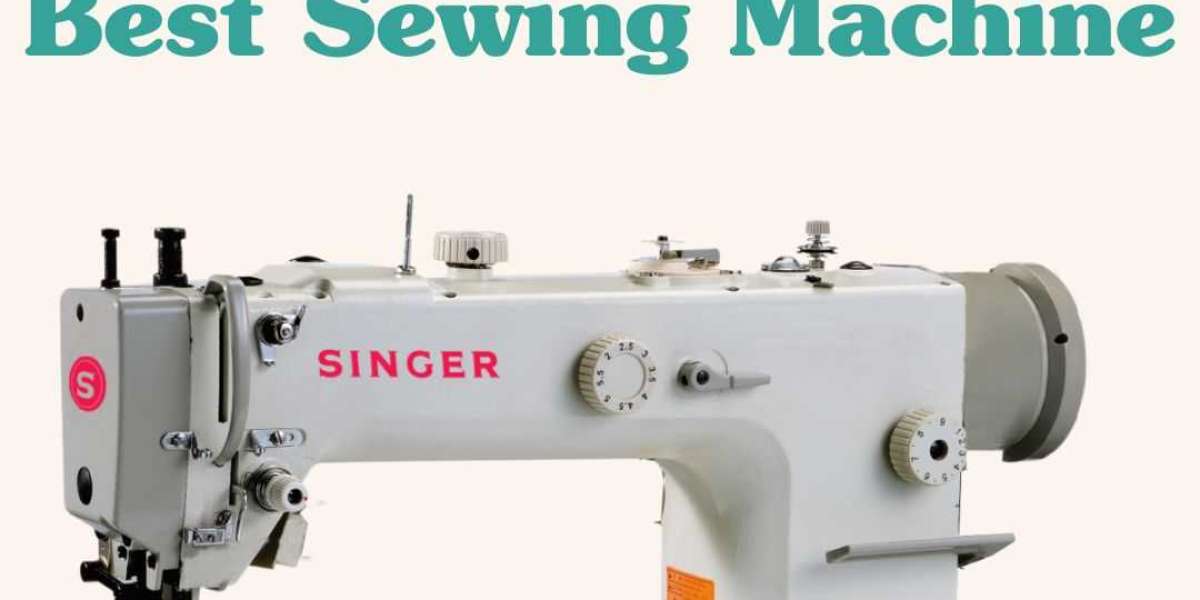Sewing machines are an essential tool for hobbyists and professionals alike. However, nothing is more frustrating than when your sewing machine starts jamming unexpectedly. Whether you’re a beginner or an experienced seamstress, dealing with sewing machine jamming can disrupt your projects and waste valuable time. The good news? Most of these issues have simple solutions. In this article, we'll explore the common causes of sewing machine jamming
and provide practical fixes to get your machine running smoothly again.
Common Causes of Sewing Machine Jamming
Understanding why your sewing machine is jamming is the first step toward fixing it. Here are some of the most common reasons:
Incorrect Threading
One of the primary causes of sewing machine jamming is incorrect threading. If the thread is not properly threaded through the machine, it can easily get tangled. This can lead to the needle getting stuck or the fabric bunching up. Always double-check your threading before starting a new project.
Quick Fix: Re-thread your machine from scratch. Make sure the presser foot is raised while threading, as this opens up the tension discs, allowing the thread to pass through smoothly.
Using the Wrong Needle
Using the wrong type of needle for your fabric can cause sewing machine jamming. If the needle is too thick, too thin, or dull, it may struggle to penetrate the fabric properly. This can lead to thread bunching, missed stitches, or even needle breakage.
Quick Fix: Always use a needle that matches the type of fabric you're sewing. Replace old or bent needles with new ones regularly.
Poor Quality Thread
Low-quality or old thread is another culprit behind sewing machine jamming. Cheap thread often has uneven thickness or loose fibers that can cause tangles and snags. This leads to poor stitching and frequent thread breakage.
Quick Fix: Invest in high-quality thread that matches your fabric type. Regularly check your thread for any knots or fraying before use.
Incorrect Bobbin Placement
Improper bobbin placement is a frequent cause of sewing machine jamming, especially for beginners. If the bobbin is not inserted correctly, the thread can tangle underneath the fabric, causing the machine to jam.
Quick Fix: Ensure your bobbin is wound correctly and inserted with the thread going in the right direction. Consult your machine’s manual for guidance on proper bobbin placement.
Tension Issues
Thread tension that’s too tight or too loose can cause sewing machine jamming. Incorrect tension can result in uneven stitches or thread bunching up. Balancing the upper and lower thread tension is crucial for smooth sewing.
Quick Fix: Adjust the thread tension settings gradually until you achieve even stitches. Test your tension on a scrap piece of fabric before sewing your main project.
Dirty or Jammed Machine Parts
Dust, lint, and fabric fibers can accumulate inside your sewing machine over time. This can cause parts to jam, leading to sewing machine jamming issues. Regular cleaning and maintenance can prevent these problems.
Quick Fix: Clean your sewing machine after every project. Remove the needle plate, bobbin case, and other parts to clear out dust and lint. Use a soft brush or compressed air to clean hard-to-reach areas.
How to Fix Sewing Machine Jamming Issues
Now that we’ve covered the causes, let’s look at how to fix sewing machine jamming problems effectively. Here are some troubleshooting tips:
Re-thread the Machine
If your sewing machine keeps jamming, the first thing to do is to re-thread the machine. Make sure to follow the correct threading path, including the tension discs, take-up lever, and needle.
Steps to Re-thread:
- Turn off your sewing machine.
- Raise the presser foot.
- Remove the current thread and re-thread the machine.
- Ensure the bobbin is properly inserted.
Check the Needle
A bent or dull needle can be a major cause of sewing machine jamming. Always inspect the needle for any visible damage before starting your project.
Steps to Replace the Needle:
- Turn off the machine.
- Loosen the needle clamp screw.
- Remove the old needle and insert a new one with the flat side facing the back.
- Tighten the clamp screw.
Adjust the Tension Settings
Incorrect tension can lead to fabric bunching and sewing machine jamming. Adjusting the tension settings can solve many stitching issues.
How to Adjust Tension:
- Test different tension settings on a scrap piece of fabric.
- If the stitches are too tight, reduce the tension.
- If the stitches are too loose, increase the tension.
Clean the Bobbin Area
A jammed bobbin area can disrupt your sewing process. If you notice your sewing machine jamming in this area, it’s time for a cleanup.
How to Clean the Bobbin Area:
- Remove the bobbin case and cover.
- Clean out any lint or thread debris.
- Use a soft brush to clean the feed dogs and surrounding area.
Oil Your Sewing Machine
Lack of lubrication can cause your sewing machine to jam. Regular oiling ensures smooth operation and extends the life of your machine.
How to Oil Your Machine:
- Refer to your machine’s manual for specific oiling points.
- Use sewing machine oil, not household oil.
- Apply a few drops to the designated areas and run the machine to distribute the oil.
Preventing Sewing Machine Jamming in the Future
Prevention is always better than cure. Here are some tips to prevent sewing machine jamming in the future:
Use Quality Materials
Always use high-quality needles, threads, and fabrics. These materials will not only improve your sewing results but also reduce the risk of sewing machine jamming.
Regular Maintenance
Regular maintenance is crucial for the longevity of your sewing machine. Clean your machine after every use and schedule a professional servicing once a year.
Practice Proper Threading Techniques
Make it a habit to double-check your threading before starting any project. Incorrect threading is one of the most common causes of sewing machine jamming.
Adjust Your Stitch Settings
If you’re working with thick fabrics, adjust your stitch length and tension accordingly. This will prevent the machine from straining and jamming.
Avoid Sewing Over Pins
Sewing over pins can cause the needle to break or jam. Always remove pins before they reach the needle to avoid this issue.
Final Thoughts
Sewing machine jamming can be a frustrating problem, but with the right troubleshooting tips, you can quickly fix the issue and get back to your projects. Understanding the common causes, such as incorrect threading, poor quality thread, or tension issues, can help you prevent jamming in the future. Regular maintenance, using high-quality materials, and practicing proper sewing techniques will ensure your sewing machine runs smoothly.
By following these guidelines, you’ll save time and reduce frustration, allowing you to focus on what you love—sewing! Remember, a well-maintained sewing machine is key to achieving beautiful, professional-looking results every time.













